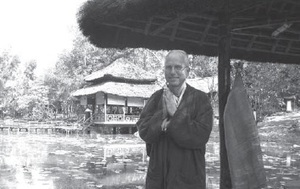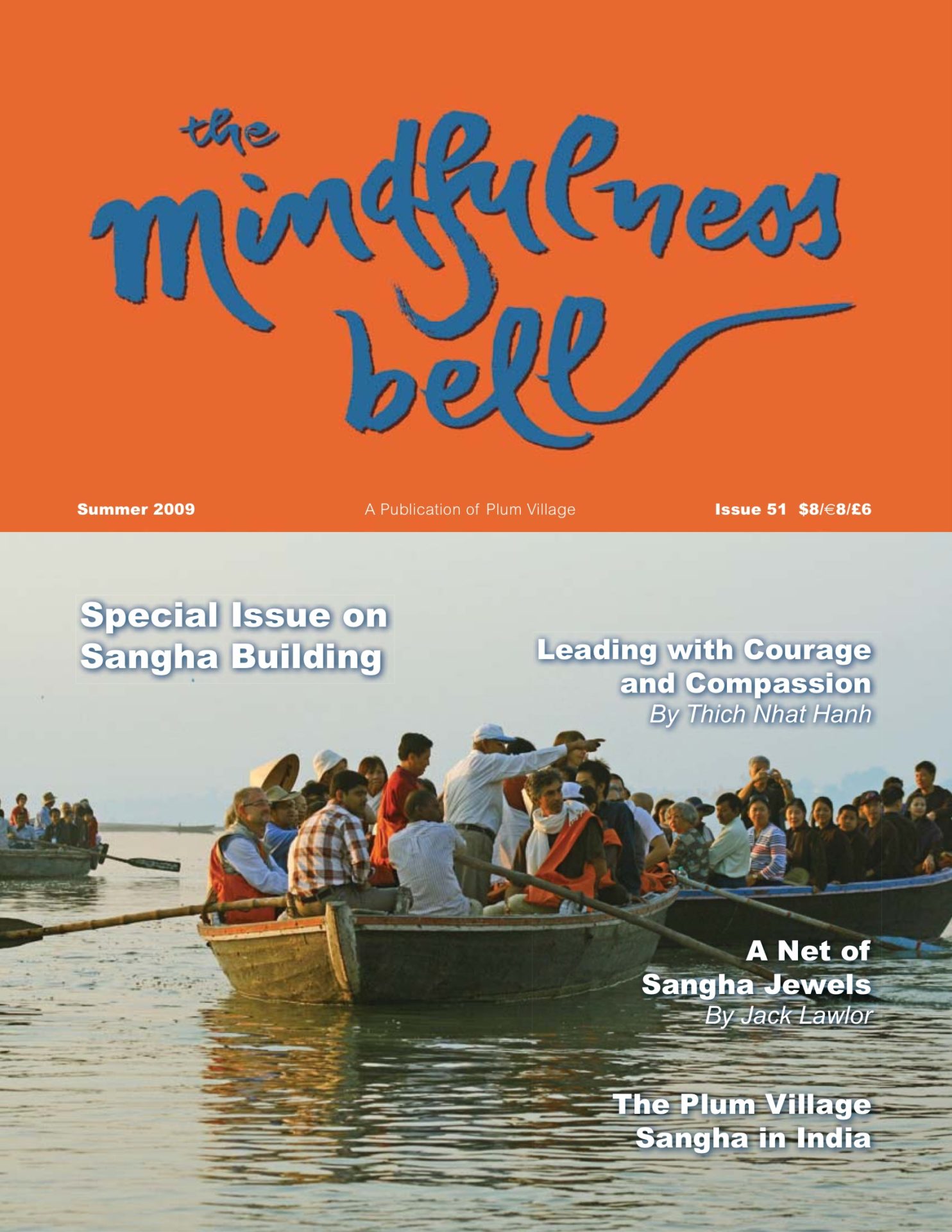By Jerry Braza

Over five years ago at the Winter Retreat, Thay suggested that local Sanghas practice meeting on a regular basis to formally recite the Five Mindfulness Trainings. Since then, at the River Sangha, in Salem, Oregon, we continue, with nurturing results, to practice with a formal ceremony every month followed by a Dharma or book discussion. The formal ceremony always includes a Sanghakarman procedure, which “ is the way we make decisions on all matters that arise in the Sangha.” (Thich Nhat Hanh,
By Jerry Braza

Over five years ago at the Winter Retreat, Thay suggested that local Sanghas practice meeting on a regular basis to formally recite the Five Mindfulness Trainings. Since then, at the River Sangha, in Salem, Oregon, we continue, with nurturing results, to practice with a formal ceremony every month followed by a Dharma or book discussion. The formal ceremony always includes a Sanghakarman procedure, which “ is the way we make decisions on all matters that arise in the Sangha.” (Thich Nhat Hanh, Joyfully Together) This process has helped us to stay connected to the core community, enhance the greater community, and overall has contributed to open dialogue and peace within the Sangha.
Several years ago, during the Sanghakarman procedure we were awakened by an honest response to the question “Is there harmony in the community?” At that gathering an individual shared “No, there is not harmony and here is why.” Apparently she and others were concerned about the amount of political discussion that seemed to be infused in several weekly Sangha gatherings and she felt the Sangha was not the refuge it had been in the past. Courageously, this individual responded from her heart and shared her deepest truth at the time.
Since the Sangha had already gathered to recite the Trainings, the Sangha continued. Following the formal recitation a discussion began that continued on several other occasions; the issue was resolved one month later at the next formal recitation. If a person is aware of difficulties within the Sangha, this needs to be brought out. Perhaps a facilitator can announce, in the weeks preceding the formal recitation, that if anyone feels there is a lack of harmony please say so now, so that the Sangha can resolve the issue beforehand with either a Beginning Anew or other dialogue process. In this way harmony will be reached before beginning the next formal recitation.
In Joyfully Together Thay shares, “Being in harmony does not mean that we do not disagree or make mistakes and miss opportunities to understand one another. It means that we are doing our best and there is no division or split within the Sangha.” Reflecting on Thay’s description of Sangha harmony, it was obvious to me that we naturally had disagreements and that we were all doing our best at the time.
However, the gift that came from our Sangha member’s sharing was the call to stop and have several discussions on the matter.
When all views were heard, we were then able to move forward with insights and suggestions for the leadership corps in order to more skillfully guide Dharma discussions, select Dharma discussion topics, and promote understanding.
We learned how important it was to have had those discussions and to subsequently encourage others to answer the “harmony question” mindfully. This may be one of the best skillful means to look deeply into Sangha dynamics and involve everyone in the process of resolving all conflicts, however small. It became clear that we were practicing the “Four Skillful Means of the Bodhisattva” as outlined by Thay:
- Offer "non-fear" and provide protection for all. Sanghas should be a safe place to practice and leaders need to provide support for this deep sharing.
- Practice loving speech. Creating an atmosphere to practice loving speech is the opportunity that formal recitations and discussions provide.
- Do things for the benefit of others. It is very empowering for all Sangha members to see that everyone benefits through skillful speech and true understanding of “interbeing” is achieved.
- Practice the path of understanding and love. Through processes such as the Sanghakarman procedure and heartfelt sharing, we are able to listen deeply and practice true love through our understanding of each other.
One simple courageous response helped our Sangha to look deeply at itself and has helped create wisdom and clarity. Harmony is possible through our daily practice of the Mindfulness Trainings. As with the Trainings, harmony is the direction we all aspire to and this can be our most essential practice.
Jerry Braza, True Great Response, is a professor, a private consultant, and the author of Moment by Moment: The Art and Practice of Mindfulness. In 2001 he was ordained as a Dharma teacher; he practices with the River Sangha in Salem, Oregon and leads retreats.

